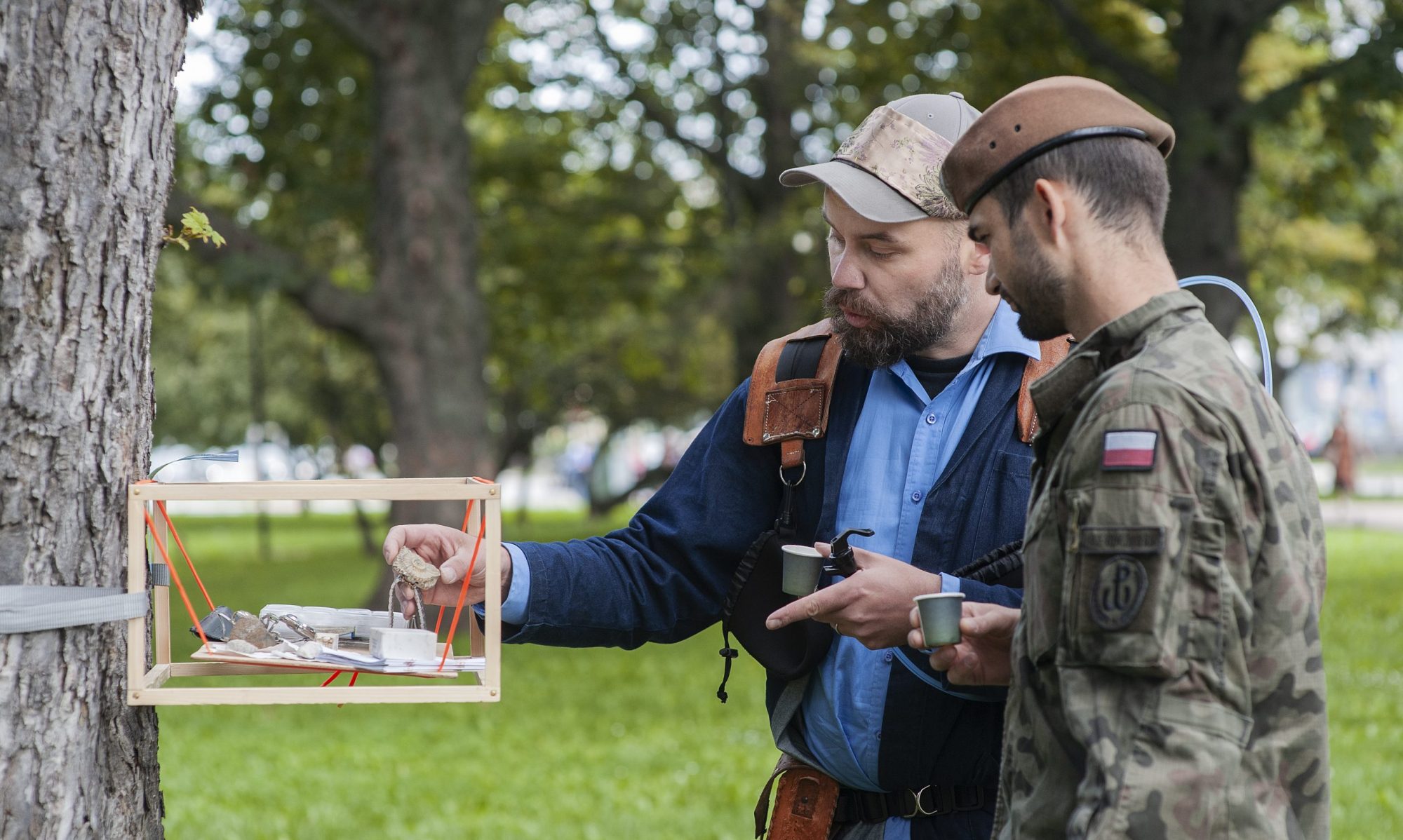The Broända spring seems to be destroyed. We visited the site (60.22312, 25.12607) yesterday and after a careful inspection of the surroundings it seems that the landscaping of the creek and the construction of the Vartiokylänlahti floodwalls have resulted into the destruction of the natural spring. I found a well in the proximity but it was dry. A survey Helsingin kaupungin ympäristökeskuksen julkaisuja 17/2013 (which Emmi found online) offers a thorough listing of all of the springs in Helsinki. According to this source the Broända spring (also know as “Viking Well”) was the best source for natural water in the city. The destruction of the spring is also confirmed on this blog and by browsing the history of the site on Helsinki ilmakuvina 1932–2014 service. Marko Leppänen has published a comment on a blog (summer, 2015), which details that a concrete rim of the spring well had been damaged by landscaping equipment.
We continued our expedition to the nearby Kurkimoisio spring, which according to the available photos seemed to be in the same condition as during the 17/2013 survey. As mentioned in the survey there were old wooded ground structures (dams?) in its proximity and I think more them were visible then before. The concrete ring placed around the spring opening was poorly covered and it had collected organic material. I tasted the water, it was drinkable but the water was discolored and had an odor. This spring would be great for a restoration project! We also strolled in the Kurkimoisionpuiston creek-spring area but no surface springs could be spotted. Apparently Helsinki area underground waters are not used as supplies for drinking water but there are facilities around the city tapped to the underground reserves, in case something goes wrong with the Päijänne Water Tunnel or the Silvola artificial lake (these are the water supplies for a million people). We spotted an odd facility named Broändan pohjavesilaitos near to the springs.

